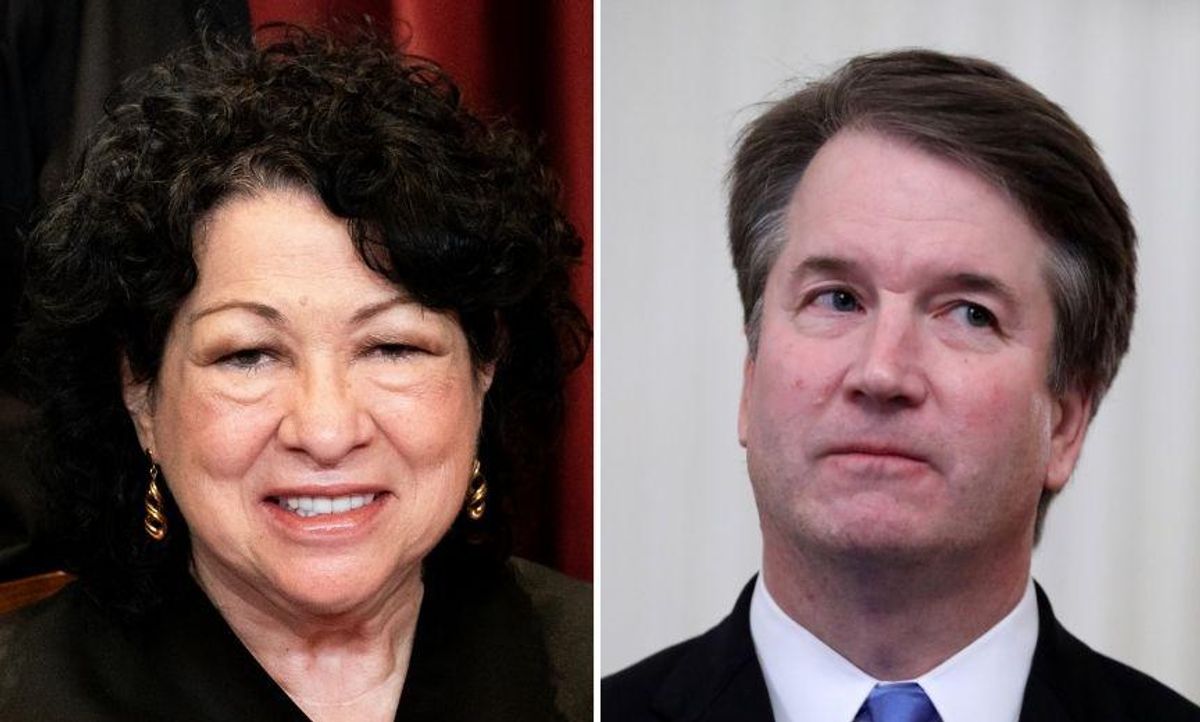executions
Top stories
Ernest Johnson was sentenced to death for murder in 1994. Fourteen years later, in 2008, Johnson was diagnosed with brain cancer that required an operation to remove a tumor, removing a significant portion of his brain in the process and resulting in epilepsy.
The state of Missouri will execute Johnson using pentobarbital, to which Johnson is particularly vulnerable due to the drug's triggering of seizures and exacerbation of pain sensations. The likely result for Johnson will be agonizing pain when the drug is administered, which his lawyers argued was a violation of the 8th Amendment banning "cruel and unusual" punishments for crime.
Johnson embarked on a legal battle imploring the state to execute him using nitrogen gas instead—which Missouri law allows as a method of execution. The case went all the way to the Supreme Court, where its conservative majority ruled in 2019's Bucklew v. Precythe that procuring nitrogen gas for execution would be an undue burden on the state of Missouri.
But Kavanaugh did say, in a concurring opinion supporting Bucklew, that Johnson could request a method of execution outside of the state's explicitly stated methods:
"I write to underscore the Court's additional holding that the alternative method of execution need not be authorized under current state law—a legal issue that had been uncertain before today's decision."
Kavanaugh even noted that the state conceded in court that firing squad would be a viable alternative method:
"At oral argument in this Court, the State suggested that the firing squad would be such an available alternative, if adequately pleaded.
As a result, Johnson requested to be executed by firing squad as a less agonizing alternative, but the 8th Circuit Court of Appeals denied this request, ruling that Johnson's request came too late and should've been made before the Supreme Court ruled on the viability of nitrogen gas.
This is despite, as Kavanaugh noted in his concurring opinion, that the legitimacy of the request was "uncertain" before the Court's 2019 decision.
Mark Joseph Stern of Slate noted this reversal—and its diversion from Kavanaugh's predecessor Justice Anthony Kennedy—in a lengthy assessment.
Kavanaugh badly wants to be seen as a reasonable and empathetic justice. But a smokescreen of rhetorical moderation… https://t.co/WYpU3MOzcc— Mark Joseph Stern (@Mark Joseph Stern) 1621888623.0
For a case to earn standing in the Supreme Court, four Justices need to agree to hear the arguments. All three of the Court's Liberal Justices agreed to hear Johnson's appeal of the 8th Circuit's decision, but Kavanaugh—who explicitly laid this path forward for Johnson in his concurring opinion—sided with the rest of the conservative Justices, dooming Johnson to potentially excruciating pain in his final moments.
In her dissent, Supreme Court Justice Sonia Sotomayor repeatedly cited Kavanaugh's own concurring opinion in Bucklew that suggested the path for requesting a firing squad as an alternative method, subtly noting the conservative Justice's own hypocrisy.
She wrote:
"Bucklew suggested that plaintiffs in exactly this situation should have little trouble identifying an available alternative. ... (opinion of KAVANAUGH, J.) ... ('[A]n inmate who contends that a particular method of execution is very likely to cause him severe pain should ordinarily be able to plead some alternative method of execution that would significantly reduce the risk of severe pain'). Johnson seeks only to take Bucklew up on that promise. Denying him leave to amend his complaint under these circumstances renders this Court's words an empty gesture."
People agreed that Kavanaugh's opinion in Bucklew, only to deny Johnson mercy two years later, was indeed an "empty gesture."
At some point, Kavanaugh is going to have to decide whether he wants to be on the right side of the law or the righ… https://t.co/h5Bd2lkGpD— D.E. (@D.E.) 1621915496.0
@ElieNYC @mjs_DC Just hearing his name or seeing a photo of that ‘man of no character’ brings bile up into my esoph… https://t.co/oQuBdGtvd9— Steam Train Hearts (@Steam Train Hearts) 1621965415.0
Justice Kavanaugh is exactly as cruel and irrational as his Senate hearing suggested. He spits on precedent and log… https://t.co/neZp1FkYjJ— Jacob Wolman (@Jacob Wolman) 1621887903.0
@ElieNYC @mjs_DC Brett Kavanaugh: the new, fresh face* of the Republican party. *perhaps that should be plural, faces.— Miss Anthrope 😷STILL MASKED (@Miss Anthrope 😷STILL MASKED) 1621964532.0
@ElieNYC @mjs_DC He's the worst.— Xing Li (@Xing Li) 1621964335.0
Kavanaugh insincere? I'm shocked to find out that gambling has been going on in here. The liberal justices are incr… https://t.co/BjfO0n8bFq— Tom Woods (@Tom Woods) 1621948391.0
They praised Sotomayor for calling him out.
@mjs_DC @Slate Real women to the rescue in understanding the integrity of the court, Kagan and Sotomayor.— tellthetruth (@tellthetruth) 1621890424.0
Dammmmnnn Sotomayor https://t.co/tcZ4cipgoE— LaurenSobchak (@LaurenSobchak) 1621968259.0
@lawcrimenews I love her so much— Patti Capello (@Patti Capello) 1621875917.0
It's unclear when Johnson's execution will be carried out.
 SECONDNEXUS
SECONDNEXUS percolately
percolately georgetakei
georgetakei comicsands
comicsands George's Reads
George's Reads





